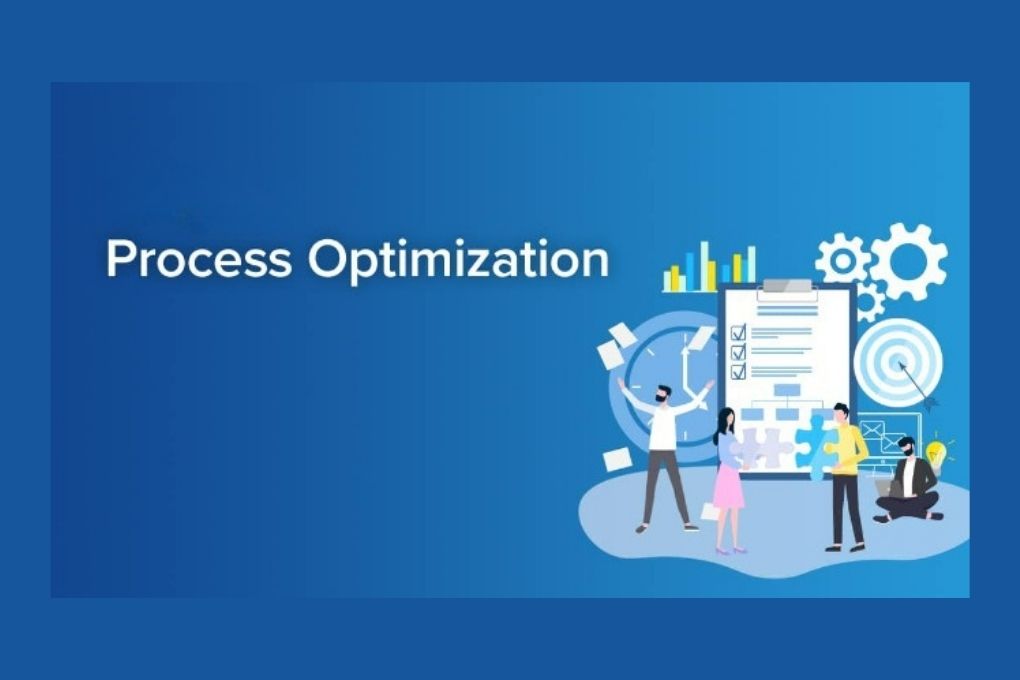
By improving production, business and administrative processes, companies can save considerable funds, but also increase efficiency and transparency in the company. How to do it?
Although process optimization tools seem complicated at first glance, they are simple in nature and practical. The company has the most work on process optimization in the beginning – because it needs to define which processes it will analyze, who is responsible for them in the company and how it will document them.
In the article you will learn:
- how to prepare for process optimization,
- what the process map is for,
- what methods can be used to analyze the processes in the company,
- why involve all employees in the optimization of processes ,
- something to keep in mind when optimizing processes,
- how to support the thinking of continuous improvement in the company.
Process optimization is divided into three phases, each of which consists of several steps that help the company to approach this activity in a structured and efficient manner.
First phase: Preparing for process optimization
Most people think that improving processes and increasing the efficiency of work in the company is something that employees do routinely and therefore often underestimate the preparation. If it were that simple, companies would work much more efficiently and everything would go smoothly from the customer’s, supplier’s or employee’s point of view. In the preparatory phase, two basic questions need to be asked: “What is a business process? What does a specific process in our company look like? ”
Think about what processes are going on in your company
The process is an activity that takes place in a company repeatedly . It is a set of consecutive steps and can be further broken down into threads. For example, the accounting process for a new online order from a customer may consist of the following threads:
- order and payment via e-shop,
- automatic sending of order confirmation,
- reservation of goods in stock,
- internal confirmation of shipment of goods to the customer,
- issuing an invoice in the ERP system ,
- sending the invoice to the customer by e-mail.
The depth to which the company decides to examine the processes depends on the needs and the subject of the business.
The need to document processes allows the company to look for answers to the following topics and considerations:
- which processes and threads bring the greatest added value to the company and its customers and they need to be given more attention,
- which processes the employees in the company spend the most time on and why,
- whereas individual processes are part of the functioning of the company as a whole, even the slightest change in one department can have an impact on the profitability, error rate, customer satisfaction or performance of other departments,
- what may appear to be time-saving in one department may, in turn, cause unnecessary work in the other department ,
- In every company, people or technology are behind the processes, and both groups can do their jobs more efficiently.
There are processes that are essential for almost any type of business, regardless of size or industry. These include, for example , the business process, the process of acquiring new customers or the care of existing customers. Sometimes these can be business-specific processes, such as developing new products (or services), procuring input, or purchasing online in an e-shop .
Orientation in the process and process map
If a company solves most of its problems only through meetings or interviews with the employees involved in the process, without any writing or analysis of facts, it may happen that the problems will recur. By optimizing processes, companies try to prevent repeated mistakes or misunderstandings and look for more effective solutions to their problems.
The most common company encounters procedural irregularities just when a problem arises. The person who has the solution to this problem on the table then usually starts contacting everyone who has been involved in the process and tries to find out at what moment and with whom the error occurred. But if a company has basic processes pre-mapped and regularly retrains people to do their job, it will prevent mistakes and resolve those that cannot be avoided more quickly.
Each process should be seen as an activity:
- which has inputs and outputs,
- which brings some added value to the company ,
- in which employees as well as external suppliers or customers may be involved ,
- which does not exist in the company in isolation and is connected to other activities in the company.
Second phase: Analysis of business processes
In the second phase, the processes from the preparatory phase are analyzed. Here is the time to take a critical look at what is happening in the company and where there is room for improvement . For example, saving employee time, reducing costs, increasing labor productivity, etc.
Talk to your team or look at the process through the eyes of someone new
It is useful for a company to try to look at business processes through the eyes of a stranger who does not know the internal business processes and to ask questions that almost no one in the company asks, such as: “It is common for sending an invoice to a customer who e-shop, does it take three days in our company? ”or ” Why do we confirm the date and time of assembly to our clients only by phone and not also by email? ”or ” It would not be better to hire a temporary worker to update the product descriptions in the e-shop to save the internet for senior marketers?
From the initial observations, it is not yet necessary to draw hasty conclusions, only to select processes and threads that are worth looking at in more detail.
It can also be useful for superiors from time to time to observe their employees at work and ask them to say openly what they think about the company’s procedures and the routine tasks they perform on a daily basis and to find out what their specific responsibilities are in a given activity. What they have reached and what they don’t. What would make their work easier and why good ideas have not yet been put into practice. You also need to ask about processes that employees do not complain about . Even a well-established and years-old process may not be optimal, but employees don’t complain because it’s a habit, “because we always do.”
Set basic performance indicators in the process
One of the most famous statements of Petr Drucker, a representative of modern management, is: “What we can measure, we can also control.” By setting measurable indicators and goals, it is possible to find out that the process is moving in an undesirable direction. Whether the company finds a slowdown in production or lower website traffic, if management knows what to measure in the company, it can take timely corrective action . It is important that what is measured is known to all employees who are part of the measured process and are responsible for its outcome. They will be able to quickly point out deviations and take action at the right moment.
Each company has its own metrics, based on which it makes important decisions (eg number of goods sold per week, number of visits to the website per month, share of sales of goods through the e-shop compared to the brick-and-mortar store, critical percentage of complaints, etc.). But what many companies lack is the connection to evaluate this data , their correct interpretation and the determination of the goals that the company strives to achieve in each of these areas.
Phase Three: Improving Business Processes
In the first phase we defined the process and process map, in the second we analyzed the most important processes and identified the biggest shortcomings and possible causes, in the third phase we can start to improve the processes.
Tune in to the whole team for improvement
Small improvements that can speed up a single employee’s activity by just a few minutes (such as automatically sending an invoice from an e-shop instead of a manual invoice) are important in process optimization. They remove the feeling of insecurity from a larger project and positively tune the whole team . Therefore, it is necessary to include them at the beginning of the implementation of process optimization. These may be small changes that do not affect the process as such, but represent a simplification or clarity of activities . By looking for small positive benefits, the company can tune employees for openness to change and improve the atmosphere in the workplace.
When improving business processes, it is necessary to focus on the process as a whole , not just on selected outputs. Every company benefits when its employees do not see process improvement as a one-time activity, but as a regularly recurring process in the company. If a company wants to beat the competition and constantly bring something new to its customers, a change of mindset in this case is a necessary part.
Talk to your employees and find key “process owners”
The process owner should ensure that the process runs as efficiently as possible and in the required quality. This person must have a clear idea of the requirements of all parties in the process and an interest in improving it. The process owner does not always have to be the head of department , but can be the employee who carries out the activity on a daily basis and has the most information about the process. It is especially important that the process owner knows the process as well as possible and especially knows how it affects other processes in the company. It is in these links between processes and in determining the roles of individual team members that the most errors and misunderstandings arise.
Choose the right information tool for your business
Process optimization in companies often occurs through the introduction of new technologies and IT solutions. As long as there are only a few employees in the company, tracking results or scheduling via a spreadsheet may be sufficient. In the phase when the company begins to grow and the results of individual processes need to be viewed from different perspectives, it is right to start thinking about systems such as CRM (customer relationship management) or ERP for resource planning
Optimizing business processes is a recurring activity
The constant search for improvement does not automatically mean that things are not working as they should. This means that the company and its employees are advancing. The process of optimizing business processes also needs to be managed. When we manage to arouse interest in improvement in the company and people start to feel that it is not an extra job, but on the contrary that it can make their job easier, they start coming up with good ideas themselves. It is important to make sure that optimizing the process in one department does not complicate the process in the other department. Therefore, the best way to optimize business processes is to :
- selection of priorities,
- identification of persons who can make a change in the processes,
- selection of an appropriate management tool a
- climb gradually and prudently.
Also Read : How To Properly Crisis Communication In a Cyber Attack On Employees






